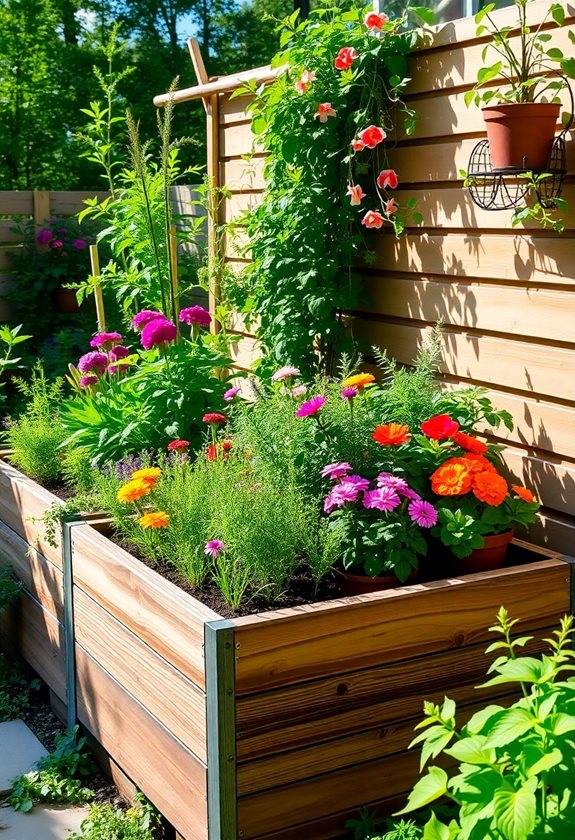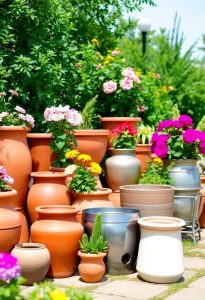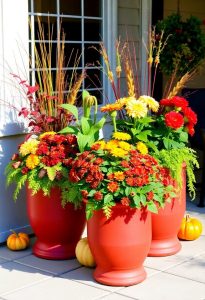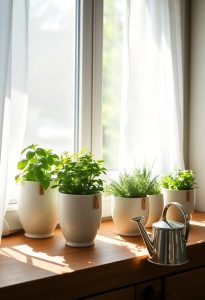Looking to create a sustainable garden? You’ve got plenty of options! Consider upcycled wooden planters made from pallets or old furniture—it’s like bringing a bit of your home into the garden! Vertical gardens are perfect for tight spaces; they’re not just practical, but fun too! And don’t overlook self-watering planters; they’re like your plants’ personal hydration stations! Plus, recycled plastic and natural materials add creativity and flair. Ready for more great ideas to spruce up your outdoors?
Design Highlights
- Upcycle old wooden pallets or crates to create unique, eco-friendly planters for your garden.
- Implement vertical gardening solutions to maximize space while growing trailing vines and herbs.
- Consider self-watering planters that reduce maintenance and ensure consistent moisture for plants.
- Use recycled plastic containers as colorful and creative planters for herbs and small flowers.
- Opt for natural materials like bamboo, clay, or reclaimed wood to promote sustainability in your gardening projects.
Upcycled Wooden Planters
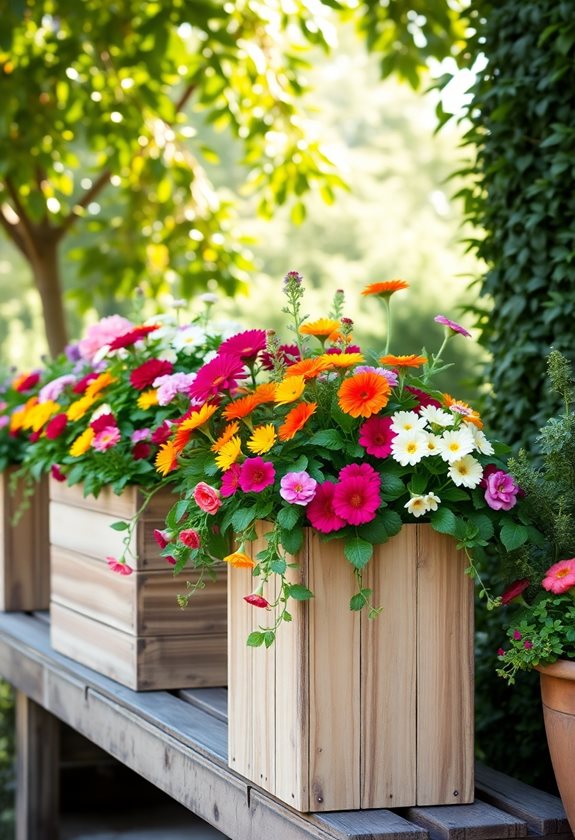
When you think about starting your garden, have you ever considered using upcycled wooden planters? These eco-friendly gems not only reduce waste but also add character to your space! You can transform old pallets, crates, or even furniture into stunning planters. Just imagine the satisfaction of creating something beautiful from what was once forgotten!
To get started:
- Choose sturdy wood that’s free from chemicals.
- Sand down rough edges.
- Drill drainage holes.
- Paint or stain for a personal touch!
With a little creativity and effort, you’ll master the art of upcycling, turning your garden into a unique, sustainable haven! Additionally, incorporating upcycled garden decor elements can further enhance the aesthetic appeal of your outdoor space.
Vertical Garden Solutions
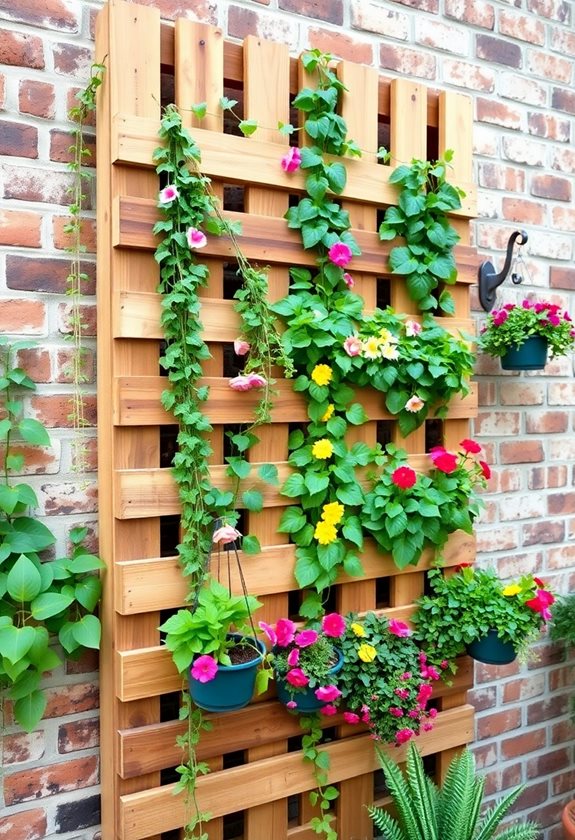
If you’ve ever looked at your backyard and thought, “I wish I had more space for plants!” you’re not alone. Vertical gardens can be your answer! They’re not just space-savers; they’re eye-catching too! Here’s how to get started:
- Choose Your Structure: Use wall-mounted planters or repurpose pallets.
- Select Plants: Opt for trailing vines or herbs; they thrive vertically!
- Maintenance: Confirm your plants get enough sunlight and water.
In fact, vertical garden structures are specifically designed for limited spaces, making them an ideal solution for urban gardening. Imagine the joy of growing lush greenery without taking up ground space! So, are you ready to turn your walls into a living masterpiece? Let’s dig in!
Self-Watering Planter Designs
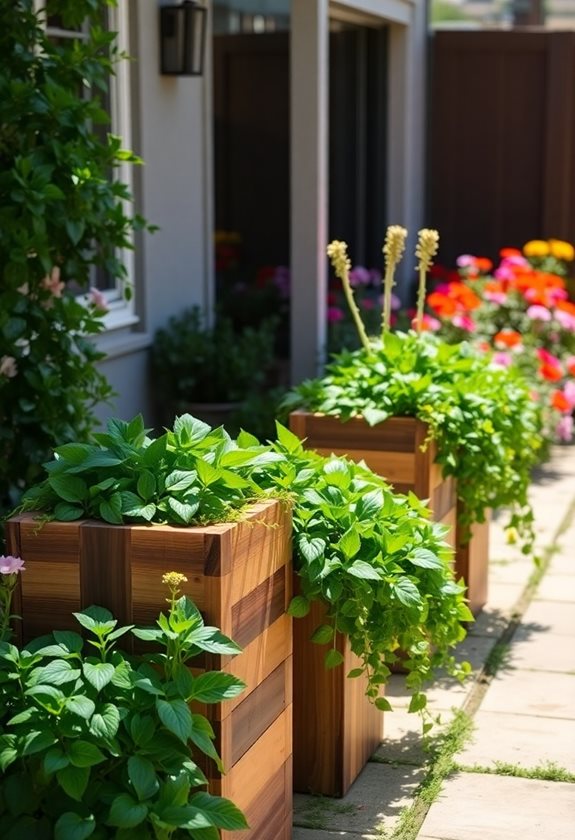
After you’ve maximized your vertical space, you might find yourself wondering how to keep those plants thriving without constant attention. Enter self-watering planters! These nifty designs allow you to enjoy a flourishing garden without the daily watering chore. Imagine a reservoir at the bottom, where plants draw moisture as needed—genius, right?
Here’s how to create one:
- Materials: Use a large container, a smaller pot, and a wick (like a strip of cloth).
- Assembly: Place the smaller pot inside the larger one, ensuring it doesn’t touch the bottom. Fill the reservoir and watch your plants thrive!
Self-watering containers are perfect for effortless gardening, making them an ideal choice for beginners. Isn’t gardening fun?
Recycled Plastic Planters
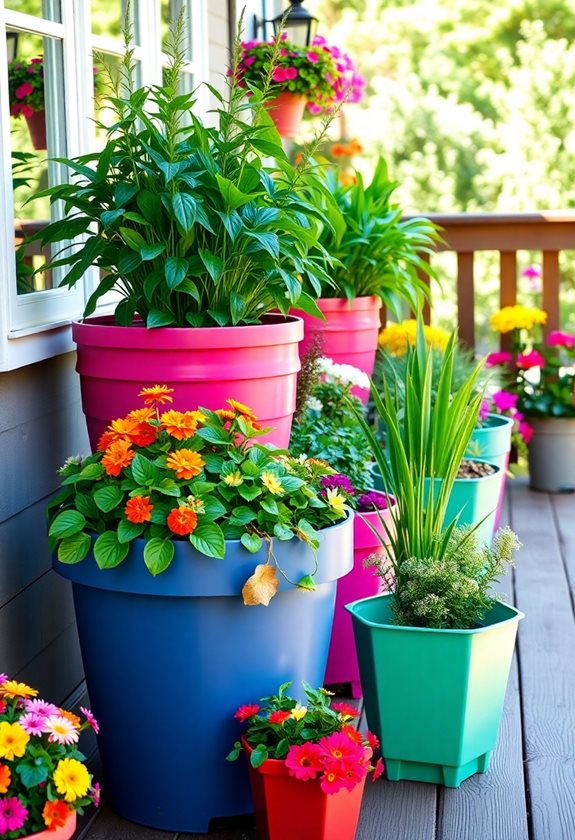
While it might surprise you, turning everyday plastic waste into beautiful garden planters is not only easy but also a fantastic way to help the environment! Have you ever thought about how many plastic containers you toss away? Instead of sending them to the landfill, consider transforming them!
- Cut them in half for herb planters.
- Paint them for a pop of color.
- Drill holes for drainage.
You’ll not only save money but also add a unique touch to your garden. Plus, it’s a fun project! Why not gather your friends and make it a crafting day? Your garden (and the planet) will thank you! Additionally, using recycled materials in your garden can lead to a more sustainable outdoor space.
Natural Materials for Eco-Friendly Planters
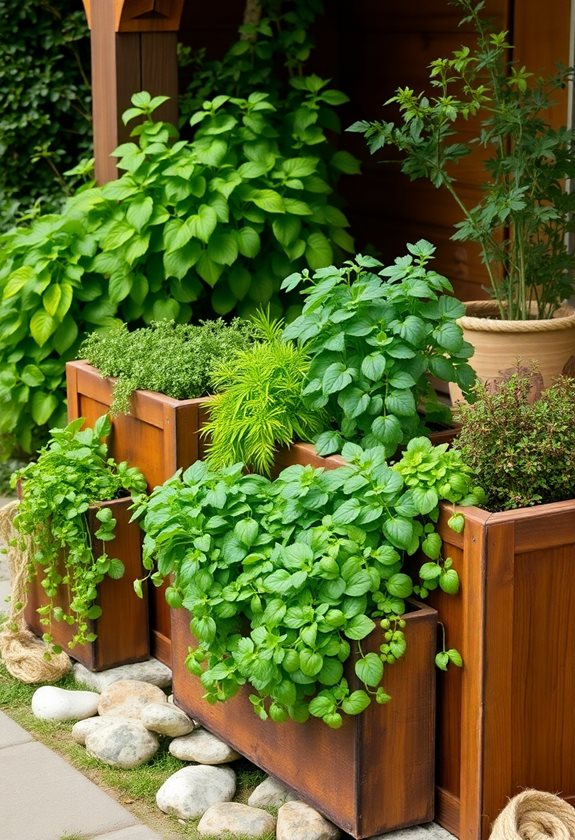
When you think about gardening, what comes to mind? The vibrant colors, the earthy scents, or perhaps the joy of nurturing life? Opt for natural materials like wood, bamboo, and clay for eco-friendly planters. They’re not just sustainable; they breathe, allowing roots to thrive. Try making a wooden planter from reclaimed pallets—it’s a fun weekend project! You could also use terracotta pots; they’re stylish and porous, promoting healthy soil. And don’t forget about coconut coir! It’s biodegradable and great for drainage. Additionally, consider exploring eco-friendly options for garden planters that can enhance your outdoor space while being kind to the environment. So, ready to dig in? Your garden deserves materials that respect our planet!
Companion Planting Techniques
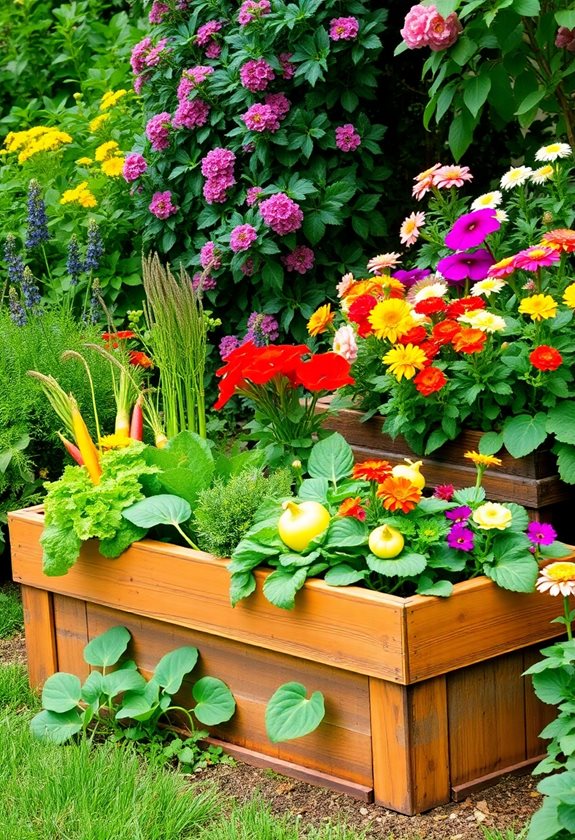
Have you ever wondered how some gardens seem to thrive effortlessly, bursting with life and flavor? It’s all about companion planting! By pairing certain plants, you can enhance growth and deter pests. For example:
- Plant tomatoes with basil—together, they taste divine and repel harmful insects.
- Try marigolds alongside vegetables; they attract beneficial bugs while keeping nasty ones away.
You’ll create a balanced ecosystem in your garden! Just think of it as matchmaking for plants. Incorporating beneficial flower pairings can also help to naturally control pests and promote a healthier garden. So, experiment and observe how these dynamic duos flourish together. Your garden will thank you with abundant harvests and vibrant colors! Happy planting!
Frequently Asked Questions
How Do I Choose the Right Plants for My Sustainable Planter?
Did you know that over 80% of gardeners struggle with plant selection? To choose the right plants for your sustainable planter, consider your local climate, sunlight, and soil type. Think about native plants—they’re low-maintenance and beneficial for local wildlife! Aim for a mix of colors and heights to keep it visually appealing. Why not include some herbs? They’re useful and fragrant. Remember, it’s all about creating a thriving, eco-friendly space! Happy planting!
What Tools Do I Need for Building My Own Planter?
To build your own planter, you’ll need some essential tools! Grab a saw for cutting wood, a drill for assembling pieces, and measuring tape for accuracy. Don’t forget sandpaper to smooth rough edges—trust me, you don’t want splinters! A level guarantees your planter sits straight, and gloves will protect your hands. So, are you ready to create your own green masterpiece? Let’s dig in and make something beautiful together!
Can I Use Paint on My Upcycled Planters?
Absolutely, you can use paint on your upcycled planters! Just make sure it’s non-toxic and suitable for outdoor use. Here’s a quick checklist:
- Choose water-based paints for safety.
- Seal it with a waterproof finish to protect from moisture.
- Get creative—add patterns or colors that reflect your personality!
Have fun with it! After all, your planters should be as unique as the plants they hold, right? Happy painting!
How Do I Maintain My Sustainable Garden Planters?
So, you wanna keep those fabulous planters thriving, huh? First off, don’t forget to water them—plants can’t text you for help! Make sure you drain excess water to avoid root rot. Check soil moisture regularly, and add organic compost to boost nutrients. Prune dead leaves, and watch for pests; they’re sneaky little devils! By staying attentive, you’ll turn your planter into a thriving oasis. Ready to roll up your sleeves? Let’s dig in!
What Are the Benefits of Using Companion Planting?
Companion planting’s got some serious perks! It can boost growth, deter pests, and even enhance flavors. Imagine planting tomatoes with basil—those two are best buddies in the garden! They protect each other while making your pasta sauce taste even better. Plus, some plants attract beneficial insects. Who wouldn’t want ladybugs hanging around? Give it a shot, and you’ll see how nature’s teamwork can transform your garden into a thriving paradise!

